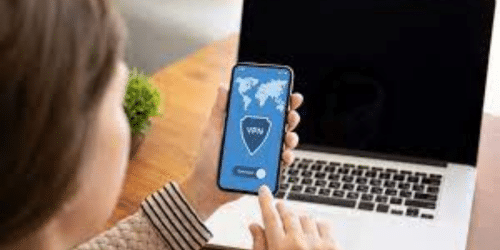Protecting our online privacy and security is paramount in today’s interconnected world. One tool that offers a secure and private browsing experience is a virtual private network (VPN). Whether you want to safeguard your personal data, access geo-restricted content, or enhance your online anonymity, setting up a VPN on your device can make a world of difference. In this guide, we’ll walk you through the process of how to set up a VPN on any device, whether it’s your computer, smartphone, iPhone, or tablet. You’ll have a clear understanding of what a VPN is, why it’s crucial, and step-by-step instructions for setting up a VPN on different devices. So, let’s delve into the world of VPNs and unlock their potential for your digital life.
Vpn Usage and Importance
A VPN, or virtual private network, is a technology that allows you to establish a secure and private connection over a public network, such as the Internet. It creates a private network by encrypting your internet traffic and routing it through a remote server located in a different location. For internet users, a VPN is a valuable tool for safeguarding their online activities, preserving their privacy, and accessing content that may otherwise be unavailable in their location. However, it’s important to note that not all VPN services are created equal, so it’s essential to choose a reputable and trustworthy provider that prioritizes user privacy and employs strong security measures. The primary purpose of using a VPN is to enhance online security and privacy. The following are some key aspects of VPN usage and their importance:
#1. Security
A VPN encrypts your internet traffic, making it unreadable to anyone who might intercept it. This is particularly important when using public Wi-Fi networks, as it prevents hackers from eavesdropping on your communications and stealing sensitive information like passwords or credit card details.
#2. Privacy
With a VPN, your IP address and online activities are masked and anonymized. Your internet service provider (ISP), government agencies, or other third parties won’t be able to track your online behavior, making it more difficult for them to monitor your activities or collect personal data.
#3. Accessing Restricted Content
VPNs enable you to bypass geographical restrictions and access content that may be blocked or limited in your current location. By connecting to a server in a different country, you can appear as if you’re browsing from that location and gain access to regionally restricted services or websites.
#4. P2P File Sharing
VPNs can be used for secure and anonymous peer-to-peer (P2P) file sharing. By masking your IP address, a VPN allows you to engage in file-sharing activities while maintaining your privacy and reducing the risk of being targeted for copyright infringement.
#5. Business Use
Businesses frequently use VPNs to give remote employees secure access to the company’s internal network. This ensures that sensitive data transmitted between remote workers and the company’s servers remains encrypted and protected.
Can I Set up a Vpn in My Home?
Yes, you can set up a VPN (Virtual Private Network) in your home. Setting up a VPN at home can help secure your internet connection, protect your privacy, and allow you to access your home network remotely.
Can You Set up a Vpn for Free?
Yes, you can set up a VPN (Virtual Private Network) for free. There are several free VPN services available that allow you to establish a secure and private connection over the internet. However, it’s important to note that free VPN services may have limitations and drawbacks compared to paid options
How Expensive Is It To Set up a Vpn?
Not entirely expensive. The cost of setting up a VPN can vary depending on several factors, including the method you choose and your specific requirement
How To Set up a Vpn on Android
Setting up a VPN (Virtual Private Network) on an Android device is relatively straightforward. Here’s a detailed step-by-step guide on how to set up a VPN on Android:
#1. Research and Choose a VPN Service
- Begin by researching and selecting a VPN service that meets your requirements. Look for providers with good security protocols, a wide range of server locations, and a user-friendly Android app.
#2. Download the VPN App
- Open the Google Play Store on your Android device.
- Search for the VPN app you chose in Step 1.
- Tap on the app to open its page and click the “Install” button.
- Wait for the app to download and install on your device.
#3. Launch the VPN App
- Locate the VPN app on your home screen or app drawer.
- Tap on the app’s icon to launch it.
#4. Sign Up or Log In
- If you’re a new user, sign up for an account with the VPN provider. Typically, this involves providing your email address and creating a password.
- If you already have an account, simply log in using your credentials.
#5. Connect to a VPN Server
- Once you’re logged in, you’ll typically be presented with a list of server locations.
- Choose a server location that suits your needs. For example, if you want to access content from a specific country, select a server in that country.
- Tap on the server location to connect to it.
#6. Grant Necessary Permissions
- The VPN app may request permission to configure a VPN connection on your device. Tap “OK” or “Allow” to grant the necessary permissions.
- Depending on your Android version, you may also be prompted to grant additional permissions for the VPN app to function optimally. Follow the on-screen instructions and grant the requested permissions.
#7. Enable VPN Connection
- Once the VPN connection is established, you’ll typically see a key or lock icon in your device’s notification bar, indicating that the VPN is active.
- You can also check the VPN app to verify your connection status.
#8. Configure VPN Settings (Optional)
- Many VPN apps provide additional settings that you can customize based on your preferences.
- These settings may include options like protocol selection, kill switch, split tunneling, and more.
- Explore the settings menu of your VPN app to configure any desired options.
#9. Disconnect or Change the Server
- When you no longer need the VPN connection, you can disconnect by opening the VPN app and tapping the “Disconnect” or “Disconnect” button.
- If you want to switch to a different server location, you can also do so by selecting a new server from the list within the app.
Alternatively, you can do the following;
- Open the Settings app on your Android device
- Simply go down and select “Network & Internet” or “Connections,” depending on your device. Look for the option “VPN” and tap on it. If you don’t see this option, you may need to expand the menu by tapping on “Advanced” or a similar option.
- Tap on the “+” or “Add VPN” button to create a new VPN connection
- You will be presented with different VPN protocols or types. Common options include “PPTP,” “L2TP/IPSec,” “OpenVPN,” or “IKEv2.” Choose the protocol based on the VPN service you are using or consult your VPN provider for the recommended protocol.
- Enter a name for your VPN connection in the “Name” field. This can be any name you prefer, for example, “My VPN.”
- Fill in the required details for the chosen VPN protocol. This typically includes the server address, VPN username, and VPN password. You can obtain these details from your VPN provider. If you’re using a commercial VPN service, they often provide an app that handles the configuration automatically.
- Once you’ve entered the necessary information, tap on “Save” or “OK” to save the VPN configuration.
- Your newly created VPN connection will now appear in the VPN settings list. Tap on the connection to open its settings.
- Optionally, you can configure additional settings like VPN options, DNS settings, or proxy settings, depending on the VPN protocol and your requirements.
- To connect to the VPN, simply toggle the switch next to the VPN connection you created. You may need to enter your VPN username and password again if it’s not saved.
- Once connected, you’ll see a VPN icon in the status bar at the top of your Android device, indicating a successful connection.
How To Set up a Vpn on iPhone
Setting up a VPN (virtual private network) on your iPhone is relatively straightforward. Once your VPN is set up on your iPhone, your internet traffic should be encrypted and routed through the VPN server you selected. However, remember to disconnect from the VPN when you no longer need its protection to restore your regular internet connection. The following is a step-by-step guide to help you set up a VPN on your iPhone:
#1. Choose a VPN service
Start by selecting a VPN service provider, there are free and paid options available. Look for a reputable provider that offers good security, reliable connection speeds, and a user-friendly app for iOS.
#2. Subscribe to the VPN service
If you’ve chosen a paid VPN service, sign up for a subscription plan and make the necessary payment. Free VPN services may require you to create an account or offer limited features.
#3. Download the VPN app
Search for the VPN app that your chosen VPN service offers in the App Store on your iPhone. Once you find the one you want, proceed with the install button to download and install the app on your device.
#3. Launch the VPN app
Once the app is installed, locate its icon on your iPhone’s home screen and tap on it to launch the app.
#4. Log in to your VPN account
If you’ve subscribed to a paid VPN service, you’ll likely need to log in using your account credentials. Enter your username and password to proceed. For free VPN services, you may need to skip this step.
#5. Connect to a VPN server
Once you log in, you’ll see a list of available server locations. Choose a server based on your preferences, such as the country from which you want your IP address to appear. Some VPN apps may automatically connect you to the best server based on your location.
#6. Enable the VPN connection
Once you’ve selected a server, you’ll usually see a “Connect” or “On” button. Tap on it to establish the VPN connection. The VPN app may ask for your permission to configure VPN settings on your device. Approve these requests if prompted.
#7. Wait for the connection
The VPN app will attempt to establish a secure connection to the chosen server. Once the connection is established, you’ll see a confirmation message or a VPN icon in your iPhone’s status bar.
#8. Verify your VPN connection
To confirm that the VPN is working, you can visit a website that shows your IP address, such as “whatismyip.com” or “ipleak.net”. If the IP address displayed on these websites matches the server you connected to, then your VPN is working correctly.
#9. Adjust VPN settings (optional)
Some VPN apps offer additional settings that allow you to customize your VPN experience. You can explore these options if you wish, but the default settings should be sufficient for most users.
How To Set up a Vpn Server
Setting up a VPN server involves a more complex process compared to setting up a VPN client on your iPhone. It typically requires a dedicated server or a virtual private server (VPS) that you have administrative access to. Setting up a VPN server can be technically challenging, especially for those without experience in server administration. It’s recommended to thoroughly research and follow the documentation of the VPN server software you choose, or seek assistance from an IT professional if needed. However, the following guide will help you set up a VPN server:
#1. Choose a VPN server software
There are various VPN server software options available, such as OpenVPN, WireGuard, and SoftEther. Select the one that best suits your needs and is compatible with your server’s operating system.
#2. Set up a server
You’ll need a dedicated server or VPS with a public IP address to host your VPN server. This can be obtained from a hosting provider or set up on your own hardware if you have the necessary expertise.
#3. Install the VPN server software
Log in to your server using an SSH or remote desktop connection and install the VPN server software of your choice. The installation process may vary depending on the software you’re using, so follow the specific instructions provided by the software’s documentation.
#4. Configure the VPN server
Once the software is installed, you’ll need to configure it. This includes setting up certificates, encryption settings, and defining the IP address range for your VPN clients. Again, consult the documentation of your chosen VPN server software for detailed instructions.
#5. Open necessary ports
To allow VPN connections to your server, you’ll need to open the appropriate ports on your server’s firewall. The required ports depend on the VPN server software you’re using. Commonly used ports include UDP port 1194 for OpenVPN and UDP port 51820 for WireGuard. Refer to the documentation for your VPN server software for the specific port numbers.
#6. Set up user authentication
Configure user authentication for your VPN server to ensure only authorized users can connect. This typically involves creating user accounts, setting passwords, and defining access permissions. You can use a local authentication system or integrate with external authentication methods such as LDAP or RADIUS.
#7. Start the VPN server
Once the configuration is complete, start the VPN server software on your server. Verify that the server is running and listening for incoming connections.
#8. Test the VPN connection
On a separate device, such as your computer or smartphone, configure a VPN client to connect to your VPN server. Use the appropriate settings, such as the server IP address, authentication credentials, and encryption protocols. Connect to the VPN server and verify that the connection has been established successfully.
#9. Secure and maintain your VPN server
Regularly update your VPN server software to ensure you have the latest security patches. Implement additional security measures, such as firewall rules and intrusion detection systems, to protect your VPN server from unauthorized access.
How Do I Setup a Vpn Connection?
The following are simple steps on how to set up a Vpn connection;
- Choose a VPN provider
- Sign up and create an account
- Download and install the VPN client
- Launch the VPN client
- Log in to your VPN account
- Select a server location
- Connect to the VPN server
- Verify your connection
- Configure additional settings (optional)
- Disconnect or reconnect
Should I Put a Vpn on My Router?
Putting a VPN on your router can offer several advantages, depending on your needs and preferences
Can I Legally Use a Vpn?
The legality of using a VPN (Virtual Private Network) varies from country to country. In most countries, using a VPN is legal and widely accepted as a legitimate tool for enhancing privacy, and security, and accessing geo-restricted content.
How Do I Add a Vpn to My Router?
Adding a VPN to your router involves a series of steps that can vary depending on your router model and the VPN service you’re using. The following is a general outline of the process:
#1. Check router compatibility
Ensure that your router supports VPN configurations. Not all routers have this capability. Check the documentation or the manufacturer’s website for information on VPN support.
#2. Choose a VPN service
Select a VPN service provider that supports router installations. Look for providers that offer router setup guides or firmware specifically designed for routers. Some popular VPN services with router support include ExpressVPN, NordVPN, and IPVanish.
#3. Prepare the router
Connect your computer to the router using an Ethernet cable or via Wi-Fi. Access the router’s administration panel by entering the router’s IP address in a web browser. You’ll need the router’s administrative login credentials, usually found on the router itself or in the documentation.
#4. Install VPN firmware (if available)
Some VPN providers offer custom firmware that you can install on your router. This firmware integrates the VPN functionality directly into the router’s operating system. Follow the specific instructions provided by the VPN provider to install the firmware on your router.
#5. Manual VPN configuration
If custom firmware is not available or you prefer manual configuration, you can set up the VPN on your router by manually configuring the router’s settings. This usually involves creating a new VPN connection, entering the VPN server details (IP address, username, password), and specifying the desired encryption protocols.
#6. Test the VPN connection
Once the VPN settings are applied, test the VPN connection by connecting a device to the router and verifying that the device’s internet traffic is being routed through the VPN. You can perform an IP address or DNS leak test to ensure your connection is secure.
Related Articles
- REMOTE ACCESS VPN: Meaning, How It Works and Best Vpn
- Discover 5 Compelling Reasons for Your Business to Employ a VPN
- Advantages of VPN: Everything You Should Know!!






